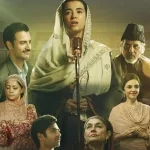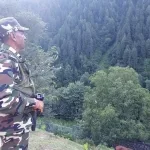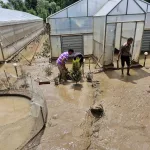By awarding the Bharat Ratna to Karpoori Thakur and Lal Krishna Advani, the Modi Government has shown that it can accommodate the varied socio-political ideologies in its governance framework. It has the ability and vision to recognise and acknowledge the stalwarts who have contributed to the nation building in various ways. Now extending the ambit further it has announced the Bharat Ratna to the former Prime Ministers, P .V. Narasimha Rao and Charan Singh respectively. All these statesmen have played a key role in the nation building by their political career that had a considerable impact on the national life when the nation was facing challenging situations. Another Bharat Ratna this year has gone to an eminent agricultural scientist, Dr. M.S. Swaminathan who revolutionised the Indian agriculture and pioneered the green revolution. Thus making India self-sufficient in the agricultural production. When analysed comprehensively all the five Bharat Ratnas are addressed to different constituencies. While Karpoori Thakur and L.K. Advani are meant to cater to the social engineering and the ideological considerations to send a political message. Honouring Narasimha Rao and Charan Singh is meant to check mate the opposition and taking the wind out of their sails. Narasimha Rao was indeed a statesman who rose above the party considerations and bailed out the nation from the economic crisis. He is the father of the liberalisation and economic boom in India. It is his vision and ability that opened India to the world market that enabled India to take the economic reforms to the next level. It is he who gave Dr. Manmohan Singh enough space to stabilise the Indian economy. Not only had that Narasimha Rao understood the implications of the geo strategic considerations. He internalised the national imperative of securing the frontiers of India by upholding its territorial integrity and sovereignty of India. It was during his tenure as the Prime Minister of India that the Indian Parliament unanimously passed the resolution in both the houses that the entire Union Territories of Jammu & Kashmir and Ladakh have been, are and shall be an integral part of India. That includes the areas of the erstwhile princely state of Jammu and Kashmir under the illegal occupation of Pakistan. This was in fact the national will that was endorsed under his leadership and became the cardinal principle of the Indian policy on Jammu and Kashmir. Neutralisation of the Article 370 and 35 A must be seen in continuity to that. He had been abandoned by the Congress. The party to which he belonged. By acknowledging his contribution to the nation, the Modi Government has sent a strong message that when it comes to the national interest, national security and territorial integrity then the parties and individuals don’t matter. What matters is the commitment and conviction to uphold the nation. Charan Singh played a key role in anti-Congress politics and stood against the Emergency imposed by the Indira Gandhi regime. He stood for democratic values. One thing is clear that by acknowledging the contributions of Karpoori Thakur ,P.V .Narasimha Rao and Charan Singh; Prime Minister Narendra Modi has check mated the opposition .Especially the INDIA alliance. He has not only punctured their vote bank but unsettled their caste calculus and political applecart. He has sent a message of social inclusion and given the Bhartiya Janta Party (BJP) an enough ground to seek the votes from the electorate with confidence and conviction in the forthcoming Lok Sabha Elections .Last but not the least. Bharat Ratna to Dr. M.S. Swaminathan is indeed a well taken decision to honour the father of Green Revolution in India. In 1960’s India was dependent on the American wheat to meet its food demands but his contribution made India the food grain surplus nation. Dr. Swaminathan in his long career developed new variety of crops that ensured bumper production. He enabled this by involving farmers side by side with his research. His pioneering contribution includes cytogenetics and breeding potato. This led to his appointment at the Central Rice Research Institute (CRRI), Cuttack to work on Indica-Japonica rice hybridisation programme to develop fertiliser-responsive varieties of rice suitable for Indian fields. This hybridisation programme was indeed the harbinger of the Green Revolution in India. This later led to the varieties like ADT 27 and RASI cultivated in Tamil Nadu. Food security had been the primary challenge for India immediately after the independence and Dr. Swaminathan made that happen with his farmer centric research. So Bharat Ratna to Dr. M.S Swaminathan is indeed a matter of national celebration. It would have been prudent if the father of the White Revolution, Dr. Verghese Kurien would also have been awarded the Bharat Ratna. His contribution to the milk production and empowerment of the farmers has been second to none. His pioneering work to create the brand AMUL and making it a farmer centric organisation is a classic case study that has been emulated internationally. Both Dr. M.S. Swaminathan and Dr. Verghese Kurien together complete the model of Indian rural development and farmer empowerment. Besides that these two represent the success stories of India in terms of Green Revolution and White Revolution (also known as Operation Flood) for making India self-sufficient and resurgent. Let us hope that Modi Government will take cognisance of the matchless contribution of Dr. Verghese Kurien too and his services to the nation are recognised and duly rewarded.
Ratnas of Bharat
Sign Up For Daily Newsletter
Be keep up! Get the latest breaking news delivered straight to your inbox.
By signing up, you agree to our Terms of Use and acknowledge the data practices in our Privacy Policy. You may unsubscribe at any time.
Leave a Comment Leave a Comment





